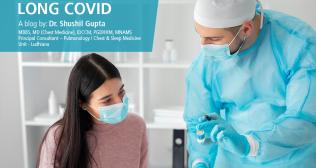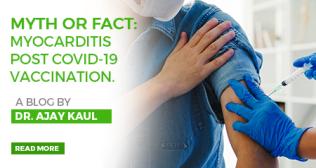
All You Wanted To Know About Omicron Variant of Coronavirus
As we were entering the new year 2022 with the hopes of forgetting what COVID-19 did to the passing year OMICRON, the new variant of SARS COV-2 virus stunned the whole world with its enhanced transmissibility and ability to re-infect. Here is all we know about this variant as of now. The OMICRON variant also known as B.1.1.529 having been first reported in Botswana on November 11, 2021 has rapidly spread to all the corners of world leading to widespread panic and newer restrictions in many countries. A month later, i.e. on 11th December,2021, India reported its first OMICRON case in Nagpur. The WHO has called this new COV-2 variant as a “Variant of Concern” in view of it having a large number of mutations, thus enhancing its ability to re-infect and transmit illness.
Illness:
Symptoms associated with OMICRON are not different from those caused by other variants but most patients (vaccinated ones) have flu like illness that lasts for a shorter duration and is of milder intensity. Although with increasing overall number of people getting infected with this strain, increase in demand of hospitalization cannot be ruled out. Further, additional data will increase our understanding of OMICRON’s behavior. Hence, for most of the vulnerable group of people, prevention is the most valuable thing to be kept in mind.
Spread:
OMICRON strain appears to be much more transmissible i.e. more easily spreads from person to person than other states. The rapidity with which it has spread over the last one week is overwhelming. Several frontline workers including nursing staff and doctors, even in large institutions, like PGI Chandigarh have reported positive in a “Carpet Spread” like fashion. What soothes the mind is that the illness is milder and brief. Vaccination and prior infection with SARS COV-2: It has been found that people who were previously infected with SARS COV-2 might become reinfected more easily with OMICRON. Similarly, vaccinated individuals can also get infected with OMICRON. However, the vaccination remains critical to reducing severe illness, hospitalization and death. Hence, vaccination hesitancy must not be encouraged. OMICRON’s emergence further emphasizes the importance of vaccination and boosters.
Testing:
Widely used RT-PCR kits can detect the COVID-19 infection effectively however, additional tests would be needed to determine if infection was caused by OMICRON.
Treatment options:
Most of the standard treatments mentioned in the national guidelines for management of COVID-19 are likely to remain effective in the management of illness caused by OMICRON as well. As we continue to become wiser about the nature of this virus, it is pertinent that we, as a nation should continue to implement the public health measures and policies to curtail the spread of COVID-19 and keep the number of infected people under control. It is equally important to ensure proper vaccination and adequate access of vaccination to the vulnerable groups including frontline workers and elderly individuals. It is also recommended that the research to identify and develop the vaccinations for the evolving viral strains should continue. Social distancing, wearing a well-fitting mask, avoiding poorly ventilated or crowded places, using hands sanitizer, coughing or sneezing into a bent elbow or a handkerchief are other important steps to be followed on an individual level, to avoid exposure and decrease your risk of getting infected with OMICRON. Stay safe, stay protected. Protect yourself and protect everybody else around you.
Thank you.
Dr. Varun Pushkarna
MD, MRCP(UK)
Senior Consultant,
Department of Internal Medicine & Critical Care
Fortis Escorts Hospital Amritsar


















